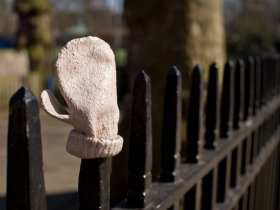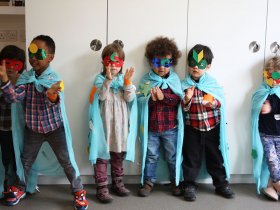Stay in touch with the latest news from AIM and get information on sector grants, jobs and events with our free fortnightly E-News.
Museum Profile – Foundling Museum
The Foundling Museum’s mission is to transform lives through creative action. We tell the story of the Foundling Hospital, which was established in 1739 by the philanthropist Thomas Coram, to care for babies at risk of abandonment.
The Hospital was the UK’s first children’s charity and became its first public art gallery. It was transformed into one of London’s most fashionable venues by the artist William Hogarth, who encouraged leading artists to donate their work and by the composer George Frideric Handel, who held annual benefit concerts of Messiah in its chapel.
Today, we animate the two halves of our story – the power of the arts to improve young lives and the power of artists to inspire social change – through exhibitions, displays, learning programmes and projects by our Foundling Fellows, who include Quentin Blake, Jackie Kay, Cornelia Parker, Grayson Perry, Sports Banger, Chris Watson and Jacqueline Wilson.
The Museum is situated on the site of the former Hospital in Bloomsbury and incorporates many architectural features salvaged from the original eighteenth-century building. Our child-focussed story gives us a special opportunity to engage younger audiences, particularly those with care-experience, for whom the museum is a place free of stigma that celebrates their lives, gives them a voice and puts them at the heart of British history and culture.
In 2017, we established ‘Tracing Our Tales’, the first museum training programme for young adults who grew up in care, which provides trainees with the skills, discipline and self-confidence to help devise and deliver our family workshops. Being part of a community with shared experience, enables trainees to build their self-esteem and many go on to apprenticeships, higher education and employment, including at other arts organisations. A graduate of the programme also sits on our Board of trustees.
For most of our visitors, the most moving objects in the Collections are the identifying tokens left by mothers with their babies between 1740s and 1760s. These tiny objects range from everyday items like thimbles, to small pieces of jewellery, carefully customised coins and hand-made textiles. Alongside these and other poignant items from the Hospital archive, hang works donated by Hogarth and his contemporaries, including Reynolds, Gainsborough, Ramsay, Hudson, Zoffany, Rysbrack, and Roubiliac. Our Collection also contains work by some of today’s outstanding artists, such as Michael Craig-Martin, Yinka Shonibare CBE and Tracey Emin. Most recently, we commissioned five portraits of surviving former pupils of the Hospital by artists including Ingrid Pollard and Wolfgang Tillmans, which line the eighteenth-century oak staircase taken from the Hospital’s Boys’ Wing. Finally, the Gerald Coke Handel Collection, housed on the top floor of the Museum, is a major research resource for study of Handel and his contemporaries, containing over 14,000 items including manuscripts, scores, art, recordings and ephemera.
Our current exhibition, ‘Superheroes, Orphans & Origins: 125 years in comics’, encapsulates the way we make our remarkable history relevant for today’s audiences. Inspired by a text-based mural made for us by poet Lemn Sissay in 2014, the show draws attention to the impact that growing up in care has on people’s lives, through an unexpected take on a familiar subject, (orphaned, adopted and fostered characters in comics), that combines historic and contemporary work, new commissions, and the voices of artists with lived experience.
Running until the end of August, we hope this exhibition will see a return to pre-Covid visitor numbers, which were around 40,000 a year. As an independent museum, we generate income through a combination of admissions, shop sales, venue hire, donations and grants. We used lockdown to expand our retail space, so we can now display our unique artists’ limited edition prints and bespoke products better, including those made for our new exhibition by Woodrow Phoenix and Bex Glendining. Now as in the past, our work to transform the lives of disadvantaged young people is immeasurably boosted by the generous actions of creative people.
Caro Howell, Director, Foundling Museum
Pictured (left to right): Tracy Emin, Baby Things (Mitten), 2008 © The artist, Courtesy of Tracy Emin Studio Header; Lemn Sissay with care-experienced trainees 2019; activity from the current exhibition ‘Superheroes, Orphans & Origins: 125 years in comics.’



